At the heart of forestry, landscaping, and construction, the chainsaw is an essential tool that has evolved significantly over the years. With the advent of battery-powered and electric models, the chainsaw industry is on the cusp of a new era of innovation, efficiency, and sustainability. In this article, we explore the exciting future trends in chainsaw development and how they are shaping the landscape of this essential tool for professionals.
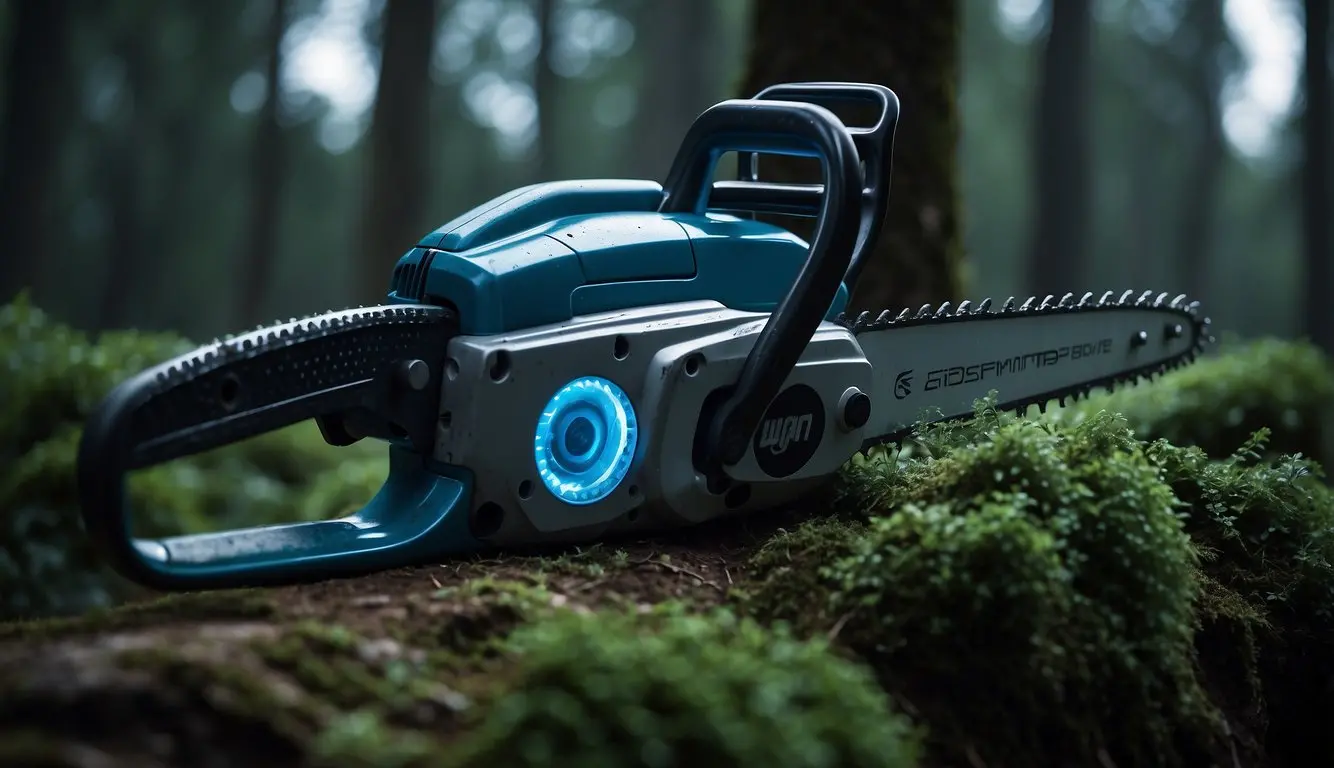
As technology continues to advance, we can expect even more efficient and powerful chainsaws that are also environmentally friendly. Innovations and trends in chainsaw power are shaping the future of this essential tool. One of the key developments is the increasing use of lithium-ion batteries, bringing cordless chainsaws to the forefront. These battery-powered models offer improved mobility, reduced noise levels, and increased portability. In addition, ergonomic advancements are also changing the way professionals use chainsaws, making them more comfortable to operate for extended periods.
The future of chainsaw technology is exciting and full of possibilities. With cutting-edge innovations in power, efficiency, and safety, the chainsaw industry is poised for a new era of growth and development. Let’s dive into the exciting world of future chainsaw innovations and explore how they will shape the future of this essential tool for professionals.
Key Takeaways
- Chainsaw innovation is evolving rapidly, with innovations in power, efficiency, and sustainability shaping the future of this essential tool.
- Lithium-ion batteries are becoming increasingly popular, making cordless chainsaws more accessible and portable.
- Ergonomic advancements are also changing the way professionals use chainsaws, making them more comfortable to operate for extended periods.
Table of Contents
Evolution of Chainsaw Innovations
Chainsaw innovation has come a long way since its inception in the late 18th century. Over the years, chainsaws have evolved from simple tools used for cutting wood to high-performance machines that are an essential part of forestry and woodworking industries around the world. In this section, we will look at some of the key developments in chainsaw technology.
From Gas to Electric
One of the most significant developments in chainsaw technology was the transition from gas-powered to electric chainsaws. Gas-powered chainsaws were the norm for many years, but they had several drawbacks. They were noisy, heavy, and produced harmful emissions. Electric chainsaws, on the other hand, are quieter, lighter, and produce no emissions. They are also more convenient to use since they do not require gas or oil.
Innovative Power Sources
Another area of chainsaw technology that has seen significant innovation is power sources. Lithium-ion batteries have become the power source of choice for many electric chainsaws. They are lightweight, rechargeable, and provide long-lasting power. Additionally, there has been a growing interest in renewable energy sources, such as solar and wind power. As these technologies continue to develop, it is likely that we will see more chainsaws powered by renewable energy sources in the future.
Overall, the evolution of chainsaw technology has been a fascinating journey. From the early days of the chainsaw to the high-performance machines of today, we have seen significant advancements in power, technology, and power sources. As we look to the future, it is likely that we will continue to see innovative developments in chainsaw technology that will make these machines even more efficient, convenient, and environmentally friendly.
Enhancing Chainsaw Efficiency
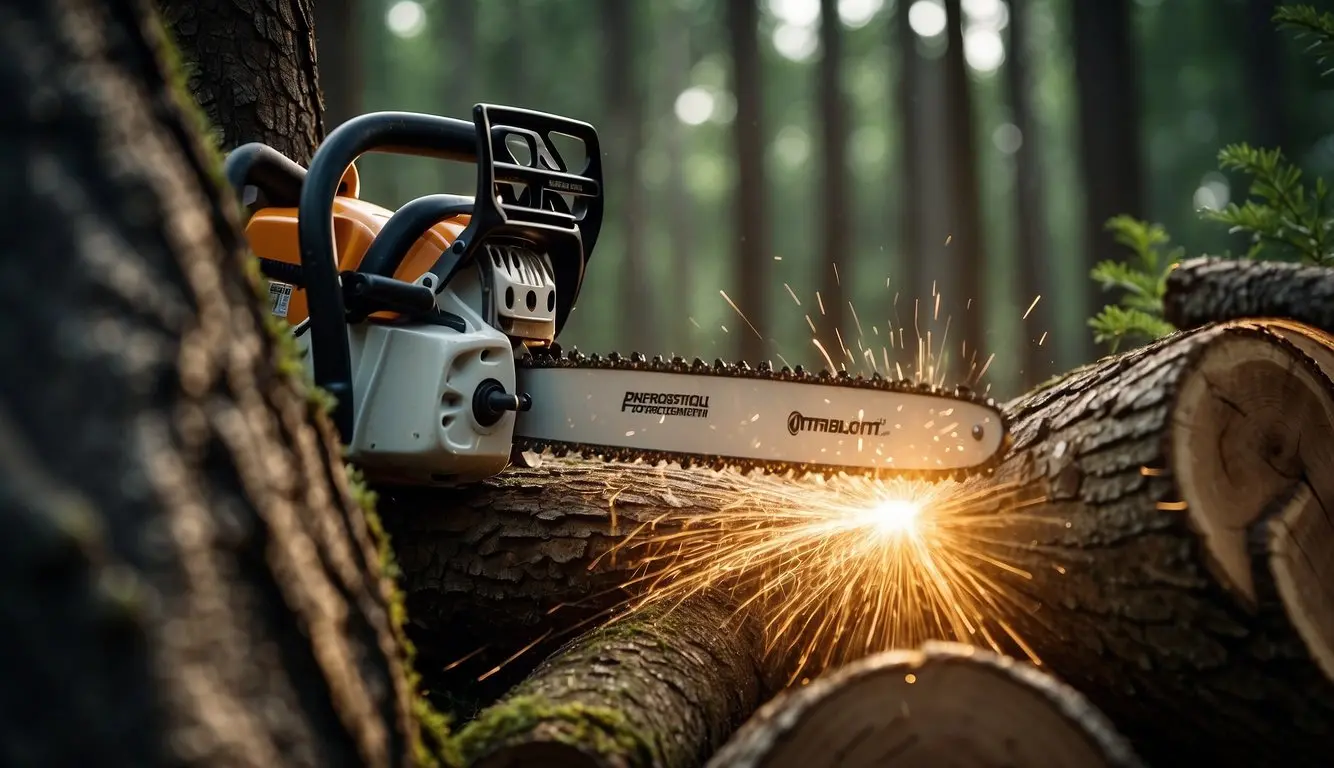
As chainsaw innovation continues to evolve, one of the key areas of focus is enhancing their efficiency. This includes improving fuel efficiency, reducing emissions, and extending battery life. By doing so, we can create more sustainable and environmentally friendly tools that also save users time and money.
Fuel Efficiency and Emissions
Fuel efficiency is a major concern for chainsaw users, as it directly impacts the cost of operation and the carbon footprint of the tool. One way we are addressing this is by developing chainsaws with more efficient engines that use less fuel while still delivering the power needed to get the job done. Additionally, we are exploring alternative fuels such as biofuels that can reduce emissions and help protect the environment.
Reducing emissions is another important aspect of enhancing chainsaw efficiency. By developing chainsaws with lower emissions, we can help protect the environment and create a more sustainable future. Zero-emission electric chainsaws are an exciting development in this area, as they offer the power and performance of traditional chainsaws without the harmful emissions.
Battery Life and Power Management
Battery life is a major concern for users of electric chainsaws, as it can limit the amount of time the tool can be used before needing to recharge. To address this, we are developing chainsaws with longer-lasting batteries and more efficient power management systems. This includes technologies that can optimize power usage based on the task at hand, as well as systems that can be easily swapped out or recharged on the go.
By improving battery life and power management, we can create more efficient and sustainable electric chainsaws that offer the same power and performance as traditional gas-powered models. This not only benefits the environment, but also makes chainsaws more convenient and cost-effective for users.
Overall, enhancing chainsaw efficiency is a key focus for us as we work to create more sustainable and environmentally friendly tools. By improving fuel efficiency, reducing emissions, and extending battery life, we can create chainsaws that are not only more efficient and powerful, but also better for the environment and the world we live in.
Cutting Performance Improvements
At the forefront of chainsaw innovation is cutting performance improvement. As technology advances, so does the ability to cut with more precision, speed, and capacity. Here are some of the latest cutting performance improvements:
Precision Cutting Technologies
We understand that precision cutting is essential for many professional and amateur users. That’s why we are excited to announce that new precision cutting technologies are now available. These technologies include laser-guided cutting and automatic blade sharpening. With laser-guided cutting, users can achieve perfect cuts every time. The laser provides a clear cutting line, making it easier to follow and achieve precise cuts. Automatic blade sharpening is another game-changer in precision cutting. It eliminates the need for manual sharpening, which can be time-consuming and difficult. With automatic blade sharpening, users can maintain a sharp blade with ease, ensuring precision cuts every time.
Speed and Capacity
Cutting speed and capacity are also important factors in chainsaw performance. We are proud to announce that we have developed new chainsaw models that offer increased speed and capacity. These models feature high-performance engines and advanced cutting systems that allow for faster and more efficient cutting. With increased capacity, users can take on larger projects with ease. These new models are perfect for professionals who need to get the job done quickly and efficiently.
Overall, we are committed to providing our users with the best cutting performance possible. With new precision cutting technologies and increased speed and capacity, we are confident that our chainsaw innovations will continue to improve cutting performance for years to come.
Ergonomic Design and Handling
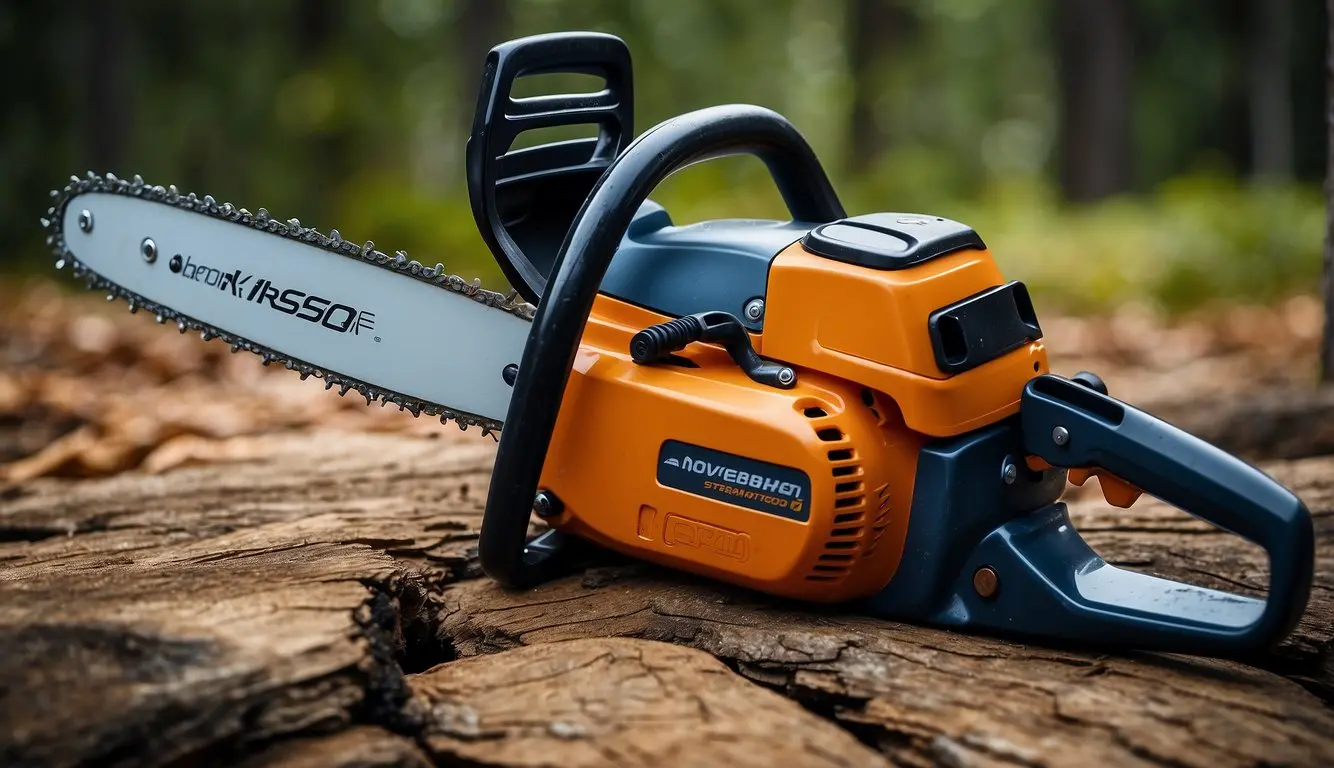
At the forefront of chainsaw innovation is the development of ergonomic design and handling. As we look towards the future, it is clear that the demand for efficiency and user comfort will only continue to grow. Manufacturers are embracing innovative materials and engineering techniques to revolutionize the traditional chainsaw. From enhanced handle designs to user-centric controls, the future promises a harmonious blend of improved performance and user safety.
Weight Distribution
One of the key areas of focus for ergonomic improvements is weight distribution. A well-balanced chainsaw distributes its weight evenly, reducing user fatigue and strain. Manufacturers are experimenting with new materials and designs to achieve optimal weight distribution. For example, some chainsaws feature a rear-handle design that shifts the weight towards the back of the saw, making it easier to control and reducing strain on the arms and shoulders.
Handle Design
Another critical aspect of chainsaw innovation is handle design. A comfortable handle can make all the difference when it comes to user comfort and control. Manufacturers are developing handles with improved grip and shock absorption to reduce user fatigue and strain. Some chainsaws even feature adjustable handles that can be customized to fit the user’s hand size and grip style.
In conclusion, ergonomic design and handling are key areas of focus for chainsaw innovation. Manufacturers are constantly experimenting with new materials and designs to improve weight distribution and handle comfort. As we look towards the future, we can expect to see even more user-centric controls and safety features that prioritize user comfort and efficiency.
Safety Innovations in Chainsaws
Chainsaws are powerful tools that can cause serious injuries if not handled properly. That’s why chainsaw manufacturers are constantly improving their safety features to prevent accidents and injuries. In this section, we’ll discuss some of the advanced safety features and chain brake systems that are now available in modern chainsaws.
Advanced Safety Features
Modern chainsaws are equipped with advanced safety features that make them safer to use than ever before. Some of these features include:
- Anti-vibration systems: These systems reduce the amount of vibration that the user feels while operating the chainsaw, which can help prevent fatigue and improve control.
- Automatic oiling systems: These systems automatically lubricate the chainsaw’s chain and bar, which helps reduce friction and prolongs the life of the chain.
- Quick-stop chains: These chains have teeth that are designed to stop the chain from rotating within milliseconds of the chainsaw being turned off. This feature can help prevent kickback accidents.
Chain Brake Systems
Chain brake systems are an essential safety feature in modern chainsaws. These systems are designed to stop the chainsaw’s chain from rotating in the event of kickback or other sudden movements. There are two main types of chain brake systems:
- Inertia-activated chain brakes: These brakes are activated by the force of the chainsaw being thrown back towards the user. The force of the kickback causes a weighted lever to push a brake band onto the clutch drum, stopping the chain from rotating.
- Manual chain brakes: These brakes are activated by the user pulling a lever or pushing a button. This type of brake is useful when the chainsaw is being used in a confined space or when the user needs to stop the chain quickly.
Safety Standards
Chainsaw manufacturers are required to meet certain safety standards to ensure that their products are safe for consumers to use. The most important of these standards are:
- ANSI B175.1: This standard sets the minimum safety requirements for gasoline-powered chainsaws.
- EN 166: This standard sets the minimum safety requirements for eye protection.
- EN 381: This standard sets the minimum safety requirements for chainsaw protective clothing.
In conclusion, safety is a top priority for chainsaw manufacturers, and they are constantly improving their products to make them safer to use. Advanced safety features and chain brake systems are just some of the innovations that are now available in modern chainsaws. By following safety guidelines and using the proper protective equipment, users can minimize the risk of accidents and injuries while using a chainsaw.
Chainsaw Technology for Arborists
As arborists, we rely on our chainsaws to help us with tree removals, crown reductions, and other tree care tasks. That’s why it’s important to stay up-to-date on the latest chainsaw technology innovations that can make our jobs easier, safer, and more efficient.
Specialized Equipment
One of the most exciting developments in chainsaw technology for arborists is the creation of specialized equipment that is designed specifically for our needs. For example, top-handle chainsaws are lightweight and maneuverable, making them ideal for working in tight spaces and at heights. These saws also often come with ergonomic handles and vibration-reducing features that help reduce operator fatigue.
Another specialized piece of equipment that can be incredibly helpful for arborists is the pruning chainsaw. These saws are designed with a narrow guide bar and a smaller chain that makes it easier to make precise cuts on branches and limbs. Some pruning chainsaws are even equipped with telescoping poles that allow you to reach higher branches without having to climb a ladder.
Arborist Specific Features
In addition to specialized equipment, there are also a number of features that are specifically designed for arborists. For example, some chainsaws come with automatic oiling systems that help keep the chain lubricated while you work. This can help extend the life of the chain and reduce the amount of maintenance that is required.
Another feature that is especially helpful for arborists is the anti-vibration system. This system helps reduce the amount of vibration that is transferred to the operator’s hands and arms, which can help prevent fatigue and reduce the risk of injury.
Finally, some chainsaws come with features that are designed to enhance safety. For example, some saws are equipped with inertia-activated chain brakes that stop the chain from spinning in the event of a kickback. This can help prevent serious injuries and accidents on the job.
As arborists, we need to be knowledgeable about the latest chainsaw technology innovations so that we can choose the equipment that is best suited to our needs. By staying up-to-date on the latest developments in chainsaw technology, we can ensure that we are working safely, efficiently, and effectively.
Sustainable Practices in Forestry
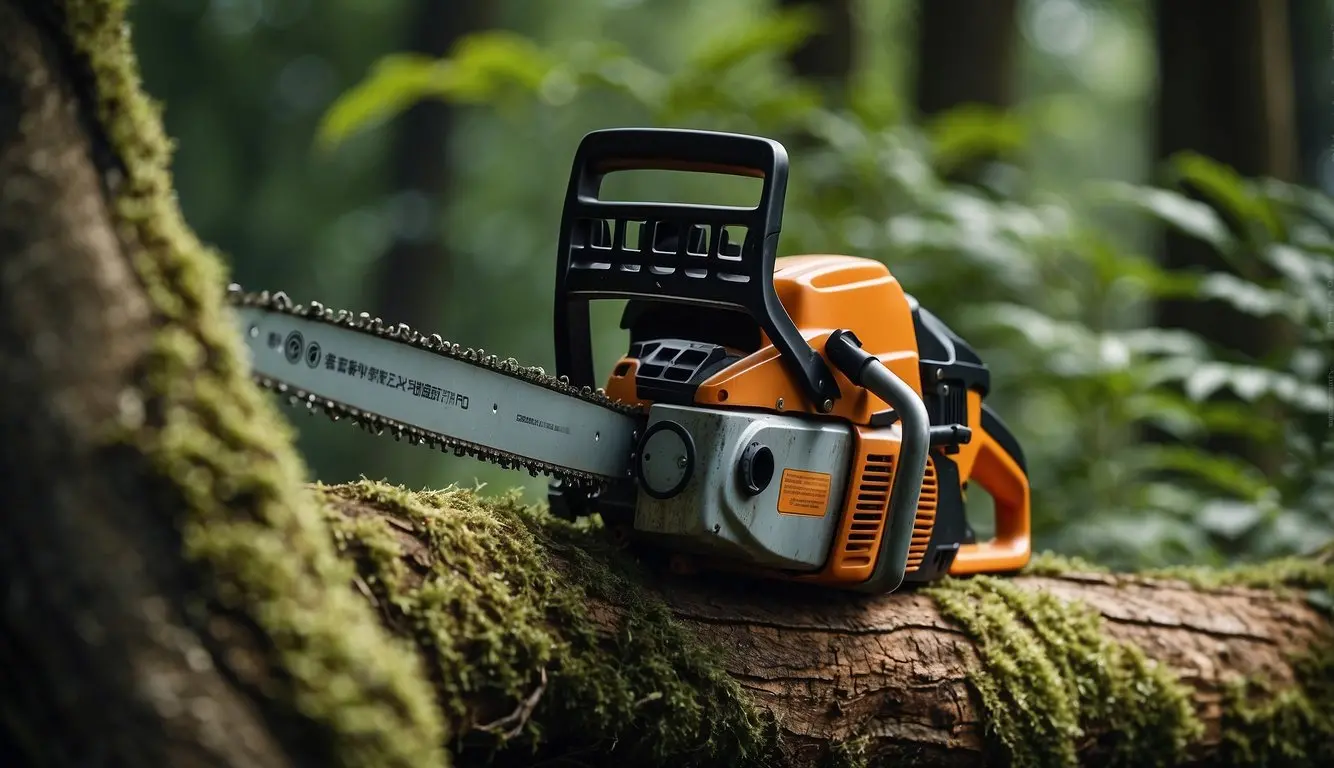
As we look to the future of chainsaw technology, it is important to consider the impact of our actions on the environment. Sustainable practices in forestry can help to ensure that our forests remain healthy and productive for generations to come. In this section, we will explore some of the eco-friendly materials and techniques that can be used to reduce noise and pollution in the forestry industry.
Eco-Friendly Materials
One way to promote environmental sustainability in forestry is through the use of eco-friendly materials. For example, some chainsaw manufacturers are now using biodegradable oils and lubricants that break down naturally in the environment. These products are less harmful to wildlife and can help to reduce the impact of chainsaw use on the environment.
Another eco-friendly material that is gaining popularity in the forestry industry is bamboo. Bamboo is a fast-growing, renewable resource that can be used to replace traditional hardwoods in a variety of applications. It is also extremely durable and resistant to damage, making it an ideal material for chainsaw handles and other components.
Reducing Noise and Pollution
In addition to using eco-friendly materials, there are also techniques that can be used to reduce noise and pollution in the forestry industry. One such technique is the use of electric chainsaws. Electric chainsaws are much quieter than their gas-powered counterparts and produce less pollution. They are also easier to maintain and require less frequent repairs.
Another technique that can be used to reduce noise and pollution is the use of chainsaw mufflers. Mufflers can help to reduce the noise produced by chainsaws, making them less disruptive to wildlife and nearby communities. They can also help to reduce the amount of pollution produced by chainsaws, making them a more environmentally friendly option.
In conclusion, sustainable practices in forestry are essential for promoting environmental sustainability and ensuring that our forests remain healthy and productive for generations to come. By using eco-friendly materials and techniques to reduce noise and pollution, we can help to minimize the impact of chainsaw use on the environment.
Smart Technology Integration
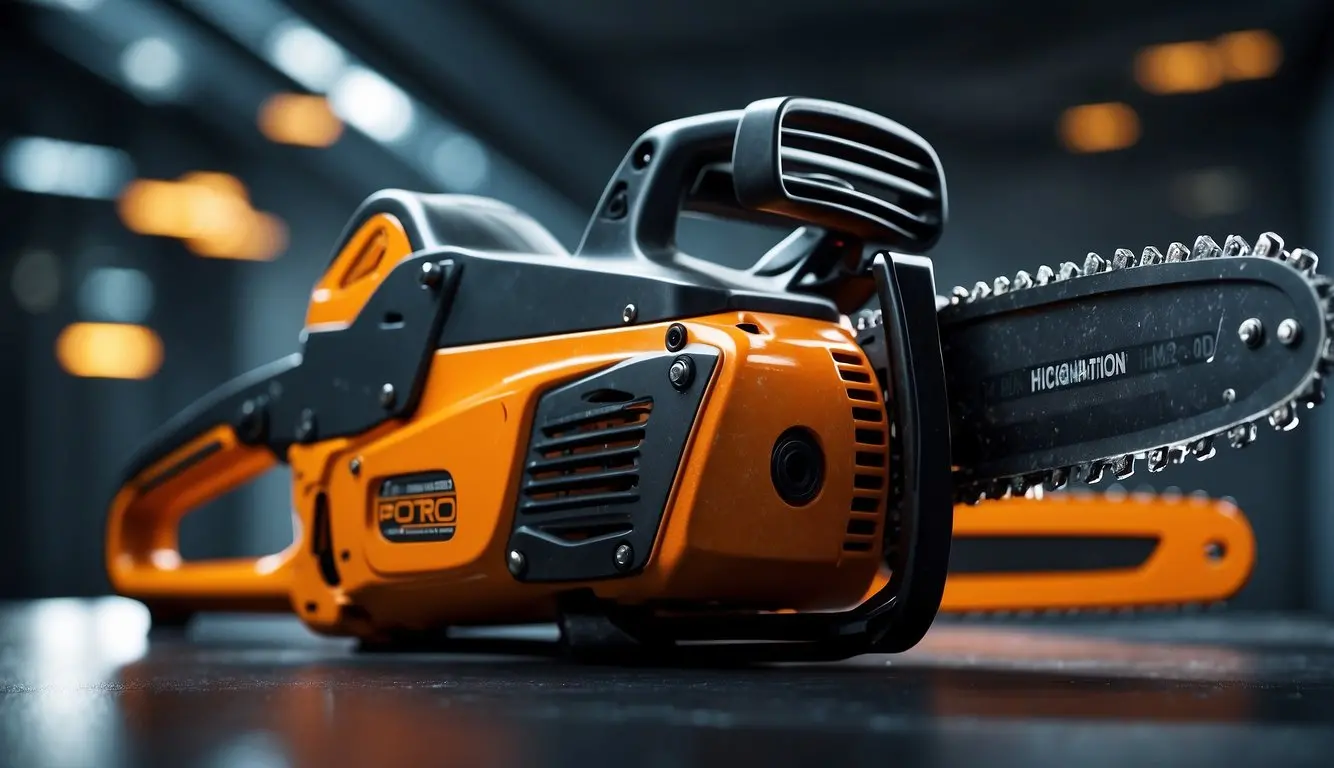
At [our company], we believe that smart technology integration is the future of chainsaw innovation. By incorporating sensors and advanced software into our products, we are able to enhance precision cutting, safety, and user control.
Sensor and Software Advances
New sensor and software advances are making it possible to create chainsaws that are more efficient and safer to use than ever before. For example, sensors can detect the density of wood and adjust the chainsaw’s cutting speed accordingly, optimizing performance and reducing wear and tear on the saw. Similarly, software like Autotune™ Performance Software can automatically adjust the chainsaw’s carburetor to ensure optimal performance in any conditions.
GPS and Remote Capabilities
Another exciting development in chainsaw technology is the integration of GPS and remote capabilities. With GPS, users can track their chainsaw’s location in real-time, making it easier to keep track of tools and prevent theft. Remote capabilities, on the other hand, allow users to control their chainsaw from a distance, making it safer and more efficient to use in certain situations.
At [our company], we are committed to leading the charge in smart chainsaw innovation. By incorporating the latest sensor and software advances, as well as GPS and remote capabilities, we are able to create products that are more efficient, safer, and easier to use than ever before.
Durability and Reliability Factors
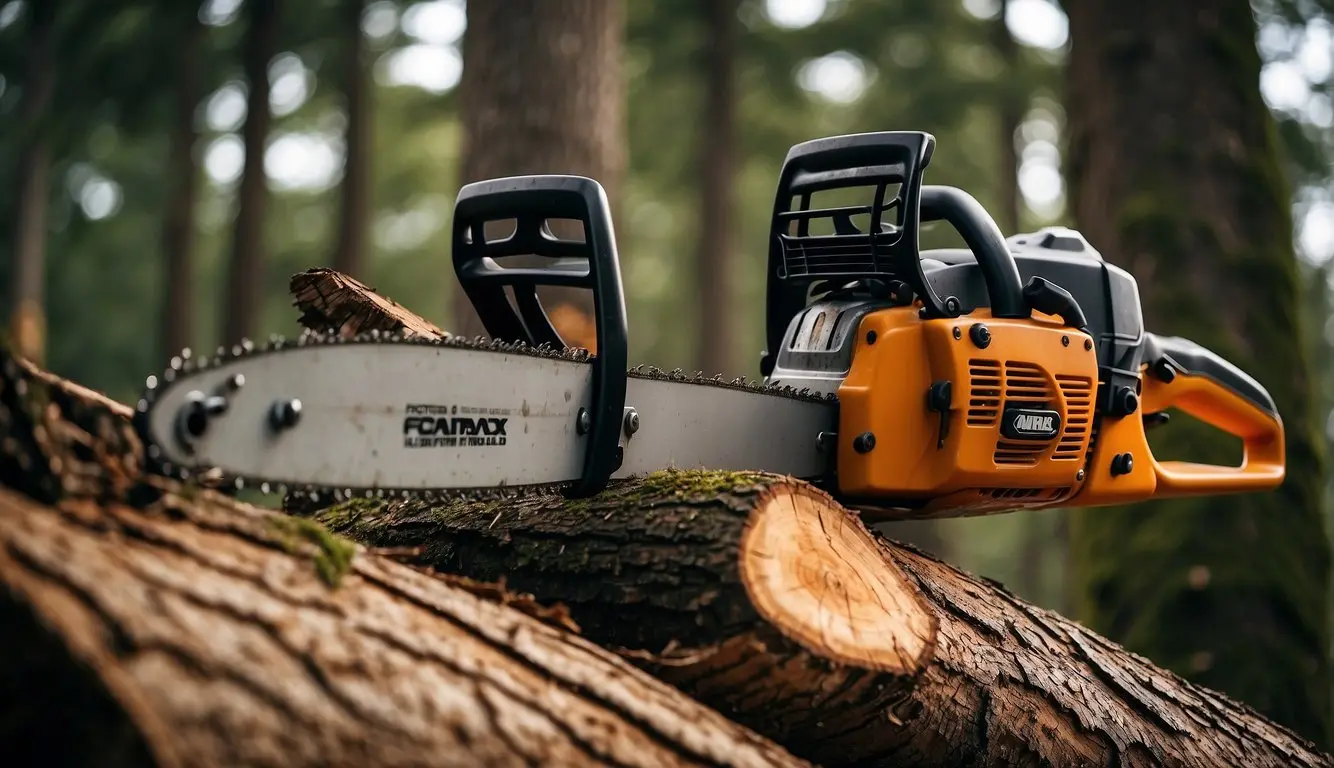
When it comes to chainsaws, durability and reliability are essential. We understand that our customers rely on our products to perform, and we take great care to ensure that our chainsaws are built to last. In this section, we will discuss the various factors that contribute to the durability and reliability of our chainsaws.
Wear and Tear Resistance
One of the most critical factors in the durability of a chainsaw is its ability to resist wear and tear. Our chainsaws are designed to withstand the toughest conditions and are built with high-quality materials that can withstand heavy use. We use advanced manufacturing techniques and materials to create chainsaws that are both lightweight and durable, making them easy to handle and long-lasting.
Longevity and Maintenance
Another essential factor in the durability of a chainsaw is its longevity and maintenance requirements. Our chainsaws are built to last, and we offer a range of maintenance services to ensure that they remain in top condition. We recommend regular maintenance to keep your chainsaw running smoothly and to prevent any potential issues from arising.
We also offer warranties on our chainsaws to give our customers peace of mind. Our warranties cover any defects in materials or workmanship and ensure that our customers can rely on our products for years to come.
In conclusion, durability and reliability are critical factors in the design and manufacture of our chainsaws. We take great care to ensure that our products are built to last, and we offer a range of maintenance services and warranties to ensure that our customers can rely on our chainsaws for years to come.
Manufacturers and Brand Innovations
As chainsaw manufacturers, we are always looking for new ways to innovate and improve our products. In this section, we will highlight some of the leading models and cutting-edge solutions from two of the top brands in the industry: Husqvarna and Stihl.
Husqvarna’s Leading Models
One of Husqvarna’s latest innovations is the Husqvarna 550 XP® Mark II. This chainsaw is designed to be powerful, yet lightweight and easy to maneuver. It features a new engine design that delivers increased torque over a wider RPM range, making it ideal for a variety of cutting tasks. The 550 XP® Mark II also includes a range of safety features, such as a chain brake and low vibration levels, to ensure safe and comfortable operation.
In addition to the 550 XP® Mark II, Husqvarna has also developed a range of battery-powered chainsaws that offer a more eco-friendly alternative to traditional gasoline-powered models. These chainsaws are powered by a high-capacity lithium-ion battery that delivers long run times and fast charging. They also feature low noise levels and zero emissions, making them ideal for use in residential areas and other noise-sensitive environments.
Stihl’s Cutting-Edge Solutions
Stihl is another brand that is known for its innovative chainsaw designs. One of their latest models is the Stihl MS 261 C-M. This chainsaw features a number of advanced technologies, including M-Tronic engine management, which automatically adjusts the carburetor to deliver optimal performance based on operating conditions. The MS 261 C-M also includes Stihl’s Quickstop® Plus chain brake system, which stops the chain in less than one second when the rear handle is released.
Stihl has also developed a range of battery-powered chainsaws that offer a more lightweight and convenient alternative to traditional gasoline-powered models. These chainsaws are powered by a high-performance lithium-ion battery that delivers long run times and fast charging. They also feature low noise levels and zero emissions, making them ideal for use in residential areas and other noise-sensitive environments.
Overall, both Husqvarna and Stihl are at the forefront of chainsaw innovation, with a range of models and solutions that are designed to meet the needs of both professional and residential users.
Frequently Asked Questions
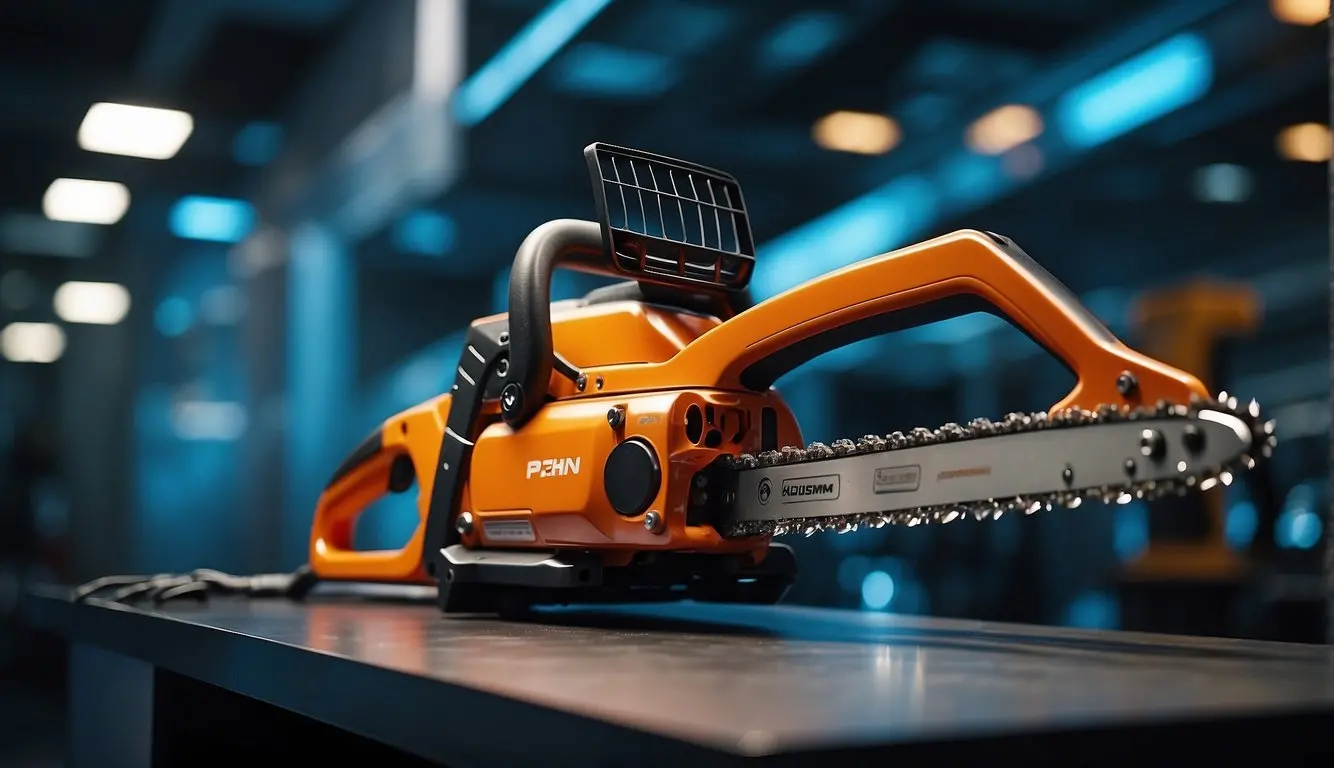
What are the latest advancements in chainsaw technology?
In recent years, chainsaw technology has advanced significantly, with manufacturers introducing new features to improve performance, safety, and user experience. Some of the latest advancements in chainsaw technology include battery-powered innovations, eco-friendly options, and smart technology integration. Battery-powered chainsaws are becoming increasingly popular due to their convenience, portability, and reduced noise levels compared to traditional gas-powered models. Eco-friendly chainsaws are also gaining popularity, with manufacturers incorporating features such as low-emission engines and biodegradable bar oil. Smart technology integration is another area where chainsaw manufacturers are making strides, with features like Bluetooth connectivity and mobile app control becoming more common.
How have chainsaw designs improved in terms of safety features?
Chainsaw manufacturers have made significant improvements in safety features to prevent accidents and injuries. Some of the most advanced safety features include anti-vibration systems, chain brakes, and automatic oiling systems. Anti-vibration systems reduce the amount of vibration that the user experiences, making it easier to control the chainsaw and reducing the risk of hand-arm vibration syndrome (HAVS). Chain brakes are designed to stop the chain in case of kickback, which is a common cause of chainsaw-related accidents. Automatic oiling systems ensure that the chain is lubricated properly, reducing the risk of the chain breaking or the chainsaw overheating.
What are the emerging trends in chainsaw power sources?
The power source of chainsaws has been evolving rapidly in recent years, with battery-powered chainsaws becoming increasingly popular due to their convenience, portability, and reduced noise levels compared to traditional gas-powered models. However, gas-powered chainsaws are still popular due to their power and long run times. Hybrid chainsaws, which combine both gas and battery power, are also emerging as a popular option. In addition, some manufacturers are exploring alternative power sources, such as electric or hydrogen-powered chainsaws.
How is automation being integrated into modern chainsaw operation?
Automation is becoming increasingly common in modern chainsaw operation, with manufacturers incorporating features such as automatic chain sharpening and self-tensioning chains. Automatic chain sharpening systems use sensors to detect when the chain is dull and automatically sharpen it, reducing downtime and improving performance. Self-tensioning chains adjust the tension automatically, reducing the risk of the chain breaking or becoming loose during use.
What materials are being used in the construction of newer chainsaw models for enhanced durability?
Chainsaw manufacturers are using a variety of materials to enhance the durability of newer chainsaw models. Some of the most common materials include magnesium, aluminum, and carbon fiber. Magnesium is a lightweight and durable material that is commonly used in chainsaw construction. Aluminum is also lightweight and durable, and it is often used in the construction of chainsaw handles. Carbon fiber is a high-strength and lightweight material that is becoming increasingly popular in chainsaw construction due to its strength and durability.
What are the most significant changes in chainsaw ergonomics to improve user comfort?
Chainsaw ergonomics have improved significantly in recent years, with manufacturers incorporating features to improve user comfort and reduce fatigue. Some of the most significant changes in chainsaw ergonomics include anti-vibration systems, ergonomic handles, and adjustable handles. Anti-vibration systems reduce the amount of vibration that the user experiences, making it easier to control the chainsaw and reducing the risk of hand-arm vibration syndrome (HAVS). Ergonomic handles are designed to fit the user’s hand comfortably and reduce fatigue. Adjustable handles allow users to adjust the chainsaw to their preferred grip, reducing the risk of hand fatigue and injury.
- Best Brush Cutter: Top 5 Models for Lawn Maintenance in 2024 - January 10, 2024
- Future Chainsaw Innovations: Advancements in Efficiency and Safety - November 12, 2023
- 5 Best Chainsaw Arm Guards - November 8, 2023